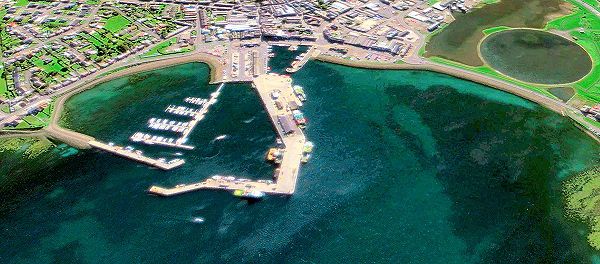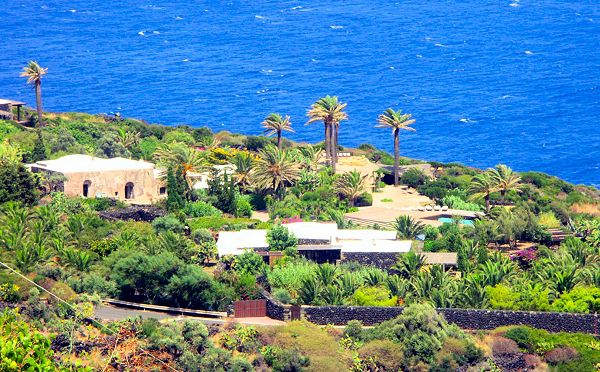ESCAPE THE MAGIC OF FOUR ISLANDS
AWAY FROM THE WORLD |
|
| Do you want holidays and culture at the same time ?
Here are four ideas of wonderful and rich places of history that are still relatively secretive. Because a trip in time is also awfully exotic, here are four suggestions to the north (oh no, everyone does not like the heat) and two to the south ... Orkney, north of Scotland
Because yes, the past of this region, inhabited since about 8500 BC, is like the sea, as exciting as it is agitated! Among the unmissable places, the "Neolithic Heart of Orkney", or Ness of Brodgar, a set of UNESCO World Heritage Sites. On the tourist level; A harsh summer climate for the chilly with summer temperatures rarely rising above 12 °. Suffice to say that for the beach ... that said, after visiting the very charming Kirkwall and Stromness (the main cities), nature lovers can enjoy themselves: in addition to beautiful landscapes, flora and fauna They are incredible. On the menu, watching marine animals (seals, whales, dolphins, etc.), but also about 300 different species of birds. Also note that we can see regularly aurora borealis ... Eat: Beef or lamb meat, fish and seafood, berries, whiskey - all native: locavores gourmets will love! Accommodation: Many hotels, B & B or guesthouses or hostels available at all prices, including the highly recommended Papa Westray Hostel, on Papa Westray islet. In practice: Regular connections by plane between Edinburgh, Glasgow or Aberdeen and Kirkwall; or by ferry, between Aberdeen and Kirkwall. On the spot, many buses or hirings of car, bicycle ... The Faroe Islands, north of Norway, between Scotland and Iceland
Because if traces of human life recently discovered show that there were "some inhabitants between the fourth and sixth century," the specialists do not know for the moment as much as to think: who were these people? Were they fishermen, "settlers" or monks fleeing these "pagan Scandinavians"? One fact is certain: as early as the 9th century, Vikings settled on these confetti. In Kirkjubøur, for example, you can see the fascinating Roykstovan farm-museum, dating back to the year 900 and still inhabited today. Or Kvivik, a village in the center of which are the remains of a village of the tenth century. And on the tourist level? With average annual temperatures ranging between 3 ° and 10 °, the 18 main islands of the Feroé archipelago are certainly not seaside destinations. In contrast, hikers will be thrilled. As naturophiles and, above all, lovers of ornithology; As for the bravest, they can try climbing or diving. Eating out: Better to love lamb (in all its forms!), Fish, seafood, potatoes, fermented dishes, puffin (a great local specialty), rhubarb and beer essential of the Faroese menu. The more adventurous can also test whale fat or dried cod skin. Accommodation: Hotels, B & B, campsites or "hostels". the offer is not huge and often rather expensive In practice: Several routes available via Edinburgh, Copenhagen, Bergen or Reykjavik. Similarly, you can go by ferry from Denmark (count a day and a half of travel!). On site, there are buses or rental cars. Kea, the most Nordic (and wild) of the Cyclades Historical interest: Very close to Athens (the ferry takes about an hour to cover the thirty kilometers that separate Korissia port from the mainland), the island, which was inhabited since the Neolithic, is obviously strongly marked by Minoan and Mycenaean civilizations - as evidenced by many remains that can be seen in situ or at the Archaeological Museum of Ioulida (to visit during the hot weather!).
And on the tourist level? With its Mediterranean climate, the mountainous Kea is beautiful in any season. In summer, the heat is intense. Better to leave at dawn or at the end of the afternoon and, during the day, enjoy the pleasures of the sea and beaches ... not all easy to access! The 2500 inhabitants of this small paradise of 131 km / 2 do not want to see their coasts disfigured by large leisure complexes, the island is actually little developed tourism. However, nautical activities are possible - such as beginner or experienced dives, boat trips, water skiing, paddleboarding, wakeboarding ... At the same time, you can also take traditional cooking classes. Eating out: Fruits, vegetables, seafood, fish, feta cheese, olives, pita bread and ouzo: Keis rely mainly on their culinary traditions! Note that even if they do not always pay mine, many establishments and taverns put the dishes in large. Accommodation: The offer is reduced, but there are fantastic hotels and B & Bs, including Soli and Teo, in Kampi-Kokkinada. This delicious couple, in addition to telling you the island and its stories, will give you all the tips and advice for a royal holiday ... and financially accessible. In practice: By ferry via Athens (to get to the port of departure, Lavrio, you can take a shuttle bus to the airport or rent a car). On site, a vehicle is essential (rental agencies at the port of arrival, Korissia). Pantelleria, between Sicily and Tunisia
Because of its strategic position, it has obviously attracted many "colonists" who have left their mark: Romans, Normans, Spaniards or Arabs who, they are in particular at the origin of "dammuso", the cubic house in volcanic stone and rounded roof, to collect rainwater, typical of the island. Among other vestiges, one can for example imagine in the time of the Phoenicians on the ruins of the Acropolis of San Marco or freely visit the surprising archaeological area of Murcia and the neolithic necropolis of Sesi. Here stands the Sese Grande, a sort of lava block funerary tower, built some 4000 or 5000 years ago by the Sesioti, a civilization that continues to intrigue archaeologists - who admit to not knowing much about its existence. about it, except that she stayed in Pantelleria and exploited obsidian deposits there. And on the tourist level? Spared by mass tourism (this small mountainous island in the south, constantly beaten by the winds, is ideal for a cushy holiday, with excursions, boat tours, scuba diving and sea bathing. or lazing in one of its superb rocky coves, including Arco dell'Elefante, particularly impressive with its elephant-shaped arch dominating it. Moreover, rich in volcanic sources, the island is also a paradise of "roots" hydrotherapy with waters of 30 ° C to 70 ° C, salt water wells, steam jets or caves full of steam forming natural spas, the "bagni asciuti". This is not all, because in addition to its capers (monsters!), Pantelleria is also famous for its special vines, the origin of Moscato and Moscato Passito - a sweet wine (almost sweet) developed with raisins. Eating out: Consisting mainly of crudités, fruits, small fries, seafood, fish, pasta and olives, the local gastronomy is a revisit "Pantelleria" of Mediterranean cuisine in general and Sicilian in particular. One of the best places to discover it, the hostel Il principe and it pirata. Accommodation: At the seaside or more inland, there are some pretty charming hotels as well as guest-type hostels - such as the Agriresort Le Ballute, a set of chic and independent "dammusi" without fuss held by the duo Matilde and Giancarlo. In practice: Air connections via Palermo and Catania or between the island and Rome, Milan and Lugano (depending on the season). A ferry connects Pantelleria to the port of Trapani, Sicily. For a cultural and authentic change of scenery guaranteed ! |
|
| Andrew Preston for DayNewsWorld | |
 |
|







